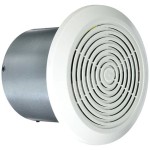Safety Bars for Bathrooms: Installation Guide
Safety bars in bathrooms are essential for maintaining independence and preventing falls, particularly for individuals with mobility limitations or those at risk of slipping. They provide vital support during activities such as getting in and out of the bathtub or shower, using the toilet, and transferring from a seated position. While the benefits are undeniable, proper installation is crucial to ensure safety and effectiveness. This guide will outline the essential steps for installing safety bars in a bathroom, providing a comprehensive understanding of the process.
1. Choosing and Selecting the Right Safety Bars
The first step in installing bathroom safety bars is selecting the appropriate type and size. Key factors to consider include:
- Location: Identify the areas where safety bars are needed, such as near the toilet, tub or shower, and beside the sink.
- Bar Material: Stainless steel is a popular choice due to its strength, durability, and resistance to corrosion. Other options include chrome-plated steel, brass, and plastic, each with its pros and cons.
- Bar Shape: Straight bars offer a simple and straightforward grip, while curved or L-shaped bars provide additional support and stability.
- Bar Size: The diameter should be comfortable to grip, typically between 1.25 and 1.5 inches.
- Weight Limit: Consider the weight capacity of the bar, ensuring it can withstand the intended load.
- Grip Texture: A textured surface provides a secure grip, even when hands are wet.
Once the desired bars are chosen, it's essential to purchase them from a reputable supplier or hardware store. Ensure that the bars are certified by a recognized testing agency, indicating their safety and quality standards.
2. Determining the Installation Location and Mounting Requirements
Before beginning installation, carefully assess the location and mounting requirements of the safety bars. This involves:
- Identifying Suitable Mounting Points: Determine the location where the bars will provide maximum support and stability. Avoid mounting on drywall alone as it may not provide adequate support. Prioritize mounting into studs or reinforcing the wall with support plates.
- Measuring and Marking the Installation Points: Use a level to ensure the bar is installed horizontally and at the correct height, typically around 30 to 36 inches from the floor. Mark the installation points on the wall.
- Checking for Existing Plumbing or Electrical Lines: Before drilling, use a stud finder or a stud sensor to avoid drilling into existing plumbing or electrical lines.
It's recommended to consult with a qualified contractor or professional installer, especially if you have concerns about wall stability or existing pipework.
3. Installing the Safety Bars
Once the location and mounting requirements are confirmed, follow these steps to safely install the safety bars:
- Prepare the Wall Surface: Ensure the mounting area is clean and free of debris. If necessary, remove paint or wallpaper to ensure a secure bond.
- Drill Pilot Holes: Drill pilot holes at each marked location, using a drill bit that matches the screws provided with the bar.
- Install the Anchors: Insert the appropriate anchors or wall plugs into the pilot holes, depending on the wall material.
- Secure the Bar: Slide the bar into the anchors and tighten the screws firmly.
- Check Stability: Once installed, test the bar by applying gentle pressure to ensure it is securely mounted. The bar should not move or wobble.
For installations on tiled walls, use specialized anchors designed for tile, such as toggle bolts or expansion anchors. If unsure, consult with a professional installer.
4. Post-Installation Inspections and Maintenance
After installing the safety bars, it's crucial to conduct regular inspections and maintenance to ensure their safety and functionality. Here are some essential steps:
- Visual Inspection: Periodically inspect the bars for any signs of damage, corrosion, or loose screws. Tighten any loose screws and address any damage promptly.
- Weight Test: Apply a light amount of weight to the bar to confirm it is secure and stable.
- Regular Cleaning: Clean the bars regularly with a mild cleaning solution to remove dust and debris. A damp cloth is often sufficient.
- Replacement Guidelines: If the bars show signs of significant damage or wear, replace them immediately. Manufacturers typically provide guidelines on the expected lifespan of their products.
Proper installation, regular inspections, and maintenance are essential to ensure the safety and effectiveness of bathroom safety bars. By following these guidelines, homeowners can create a safer and more accessible bathroom environment for themselves and others.

How And Where To Install Bathroom Safety Rails Grab Bars

How And Where To Install Bathroom Safety Rails Grab Bars

Enhance Bathroom Safety With Grab Bar Installation Guide Complete Care

Where To Install Grab Bars Add Safety Stability Your Home

How To Ensure Grab Bar Safety For Seniors Freedom Showers

Installation Of Grab Bars In Shower Step By Guide

How To Install Bathroom Safety Grab Bars True Value Hardware

Affordable Grab Bar Installation For Seniors Apa Medical

Shower Bar How To Install Bathroom Grab Bars

Installation Of Grab Bars In Shower Step By Guide







